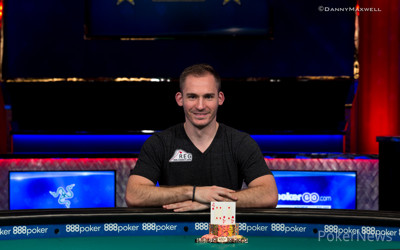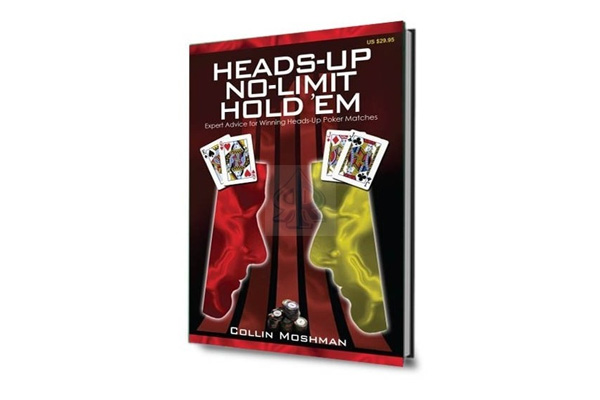Heads Up No Limit
Author Collin Moshman
- Play Texas Holdem vs Advanced Ai Bots. Bankroll: $ 100000 Welcome anonymous.
- Kongregate free online game Texas Hold 'Em Poker: Heads Up - Improve your poker game! Play no-limit Texas Hold 'em poker in a 3D first-person perspective a.
- For more on this topic, check out The Beginner’s Guide to Opening the Button in Heads-Up No Limit. Balance really matters. When playing tournaments, many players advocate a more exploitative style. This is acceptable when you only play with that specific player every now and again, or even just that one time.

Heads-up confrontations can occur in any game, even when every seat is occupied. Yet, most hold em players who transition to the heads-up form, especially if they are from full ring no-limit.
Find out how to qualify for this book in the Two Plus Two poker bonus program
Synopsis of Heads-Up No-Limit Hold 'em
Heads-up confrontations can occur in any game, even when every seat is occupied. Adjusting to the amount of aggression can be difficult since heads-up battles require you to bet and raise with many hands. This book covers heads-up tournaments, cash matches, the final two of a multi-table tournament, and blind-vs-blind play at fuller tables. Mastering heads-up no-limit hold ‘em is invaluable if you’re looking to add a loose-aggressive component to your game.
With more heads-up matches available, becoming proficient in them is highly profitable. This text is the first strategy book devoted to no-limit heads-up play. You will learn to: 1. Master expected value, equity, and heads-up fundamentals 2. Play and exploit the most common playing styles 3. Manipulate the pot size based on your hand and your opponent 4. Attack button limps, bluff multiple streets, and play aggressively 5. Distinguish between optimal tournament and cash strategies 6. Exploit your opponents through metagame mastery 7. Maximize your profits through game theory and business concepts.
So if you are an aspiring heads-up professional, or are just challenged to a one-on-one battle, Heads-Up No-Limit Hold ’em provides you with the tools you need for success.
Excerpt from the Book Heads-Up No-Limit Hold 'em: Three-Betting Preflop
To continue our discussion facing button raises, we now address three-betting in more detail. This first section discusses an advanced play that works well against thinking, aggressive opponents, particularly those who raise liberally from the button preflop. It requires having already played tightly from the big blind, which if you follow the advice given so far you will be doing.
Suppose you are facing an aggressive player’s button raise. You know it could mean many different hands, but you don’t have a hand that figures to be a favorite, or at least a significant enough favorite to build a large pot out of position. But it has potential. In particular, good candidates include T9o, T8s, 54s, or a small pair.
You have been folding to most button raises, and you now make a small reraise. Against such a small reraise, it is unlikely your opponent will fold preflop. If he plays back before the flop, you fold. When he calls, you lead out on any flop for a one-half to two-thirds pot bet. If you miss the flop and he calls or raises, you are done with the hand (unless you improve to a strong holding on the turn).

The reasoning behind this play is that an intelligent player will tend to think that someone who has been tight from the big blind and unexpectedly makes a small reraise may be doing so because he wants action with a strong hand. Unless your opponent connects with the flop in some way, he will usually concede the hand.
This play is a way to be the one showing the greatest strength preflop, and therefore the natural one to take it down after the flop, without committing a lot of chips. Plus, you can always win a big pot when you flop a strong hand and your opponent connects as well.
Effective stacks: $1,500
Blinds: $10-$20
Note: Your opponent plays a solid tight-aggressive style, raising about 50 percent of his hands preflop, and you have been inactive facing button raises.
Your hand: T8
Action: Your opponent raises to $60 from the button. You reraise to $115 in the big blind and he calls. The pot is $230.
Flop: K72
Action: You bet $130 and your opponent folds.
Analysis: Unless your opponent has a king, it will be difficult for him to stay in this hand. You have shown significant strength, and, due to your earlier tightness, there is no reason for him to believe you are bluffing.
When your opponent does play back, you need to be careful. For instance, if the flop had been J82, and he raised your post-flop leadout bet, then more often than not, you will be facing at least top pair or perhaps second pair with a higher kicker. You have shown significant strength on two betting rounds, yet your tight-aggressive opponent still wants to build a big pot. So it is likely he has the best hand. You might call if the raise was small and the stacks deep enough that the implied odds to draw to your five-outer (the three tens and two eights) were there, but generally, when an opponent plays back at you in this situation, give him credit for a real hand and fold.
And finally, remember that the small three-bet is an advanced play to be used sparingly against players who are both aggressive and perceptive. But against a different type of opponent, this play can and should become a money loser.

Another variation on three-betting is the three-overbet. Sometimes when you are the big blind and the button raises, you should make a larger-than-normal reraise to simplify further decision-making. By “larger-than-normal,” I mean at least five times the button’s raise. There are several conditions that make this play particularly beneficial:
- You have a robust yet non-premium hand.
- You do not feel that you can significantly outplay your opponent with conventional strategy. And,
- Your stack does not significantly exceed 10 times the button’s raise-size.
Let us look at an example where all these criteria are optimal, and then change the conditions to see how they affect our willingness to make a three overbet.
Villain: $2,100
You: $900
Blinds: $25-$50
Note: Villain is an online professional heads-up player.
Your hand: 44
Action: Villain raises on the button to $150.
Analysis: This is an excellent time to execute a three-overbet by reraising all-in. A smaller raise will tend to pot-commit us, and pocket pairs play well in case of a call since two high cards significantly outnumber pairs from a hand combination perspective.
Action: We reraise all-in for $900 and Villain folds.
Heads Up No Limit Strategy
Now let us modify each of the criteria and consider their effects on our decision. First, suppose our hand was A2 rather than 44. When our opponent folds, we win the hand regardless. But when he calls, the pair will often be a slight favorite. By contrast, unless he perceives us as being hyper loose-aggressive, his calling hand range consists primarily of hands that have us behind as a 70-to-30 underdog — stronger aces and pocket pairs. And we are only a slight favorite against the remainder of his possible calling hands, such as king-ten suited or king-queen offsuit.
Similarly, hands such as
Expert Heads Up No Limit
8 7
are more favorable than Weak High Card Hands such as
K 2
simply because the mid suited connectors will tend to be live, whereas a kicker-less king will often be dominated. So with K2, we should be inclined to fold rather than three-overbet.
Next, suppose our opponent was much weaker, perhaps tight-passive. Then not only might we worry about the strength represented by a passive player’s raise, but folding leaves us with an excellent opportunity to regain a stack by chipping away at this player. In particular, simply by playing a standard loose-aggressive style, you will have a considerable edge if the match progresses normally. So you would be much less inclined to go for a potentially match-ending three-overbet.
Lastly, suppose we again have a small pair against a much better opponent, but the money is significantly deeper with a shorter stack of $4,000. Raising $4,000 to win the $200 on the table risks too much for a small reward. We could instead make our three-overbet a more conventional $750, which indeed works well when we get an immediate fold, or when he calls and we spike a set. But those times our opponent four-bets us all-in, or calls and we miss, creates a difficult spot for us. In the first case, we must either forfeit our large chip investment, or call another $3,250. And against a flat-call and missed flop, we will be playing a huge pot, out of position, generally facing three overcards. This is clearly a situation to avoid.
